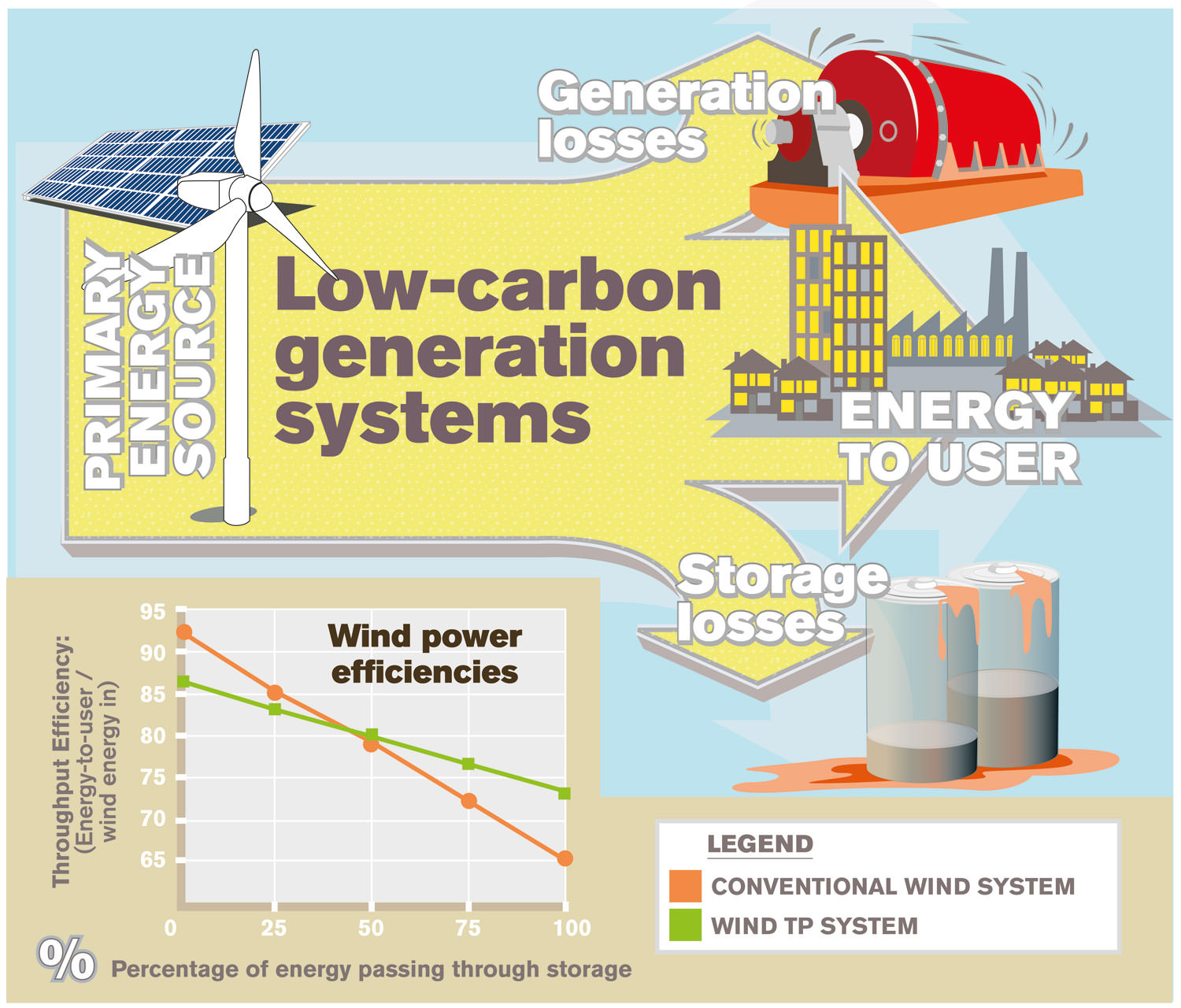WindTP is one member of a set of technologies collectively referred to as GIES - Generation Integrated Energy Storage. All of the technologies in this set combine energy storage with net generation so that they export much more electricity than they import and the timing of electricity import/export is highly flexible. You can download a paper about GIES systems here. This paper explains that all GIES systems have two different efficiencies:
Transmission Effieciency: The ratio between total output electrical energy assuming that no energy passes through storage.
Storage Efficiency: The ratio between output electrical energy if all energy passed through storage and the output electrical energy if no energy passed through storage.

No wind turbine transmission system is 100% efficient. Some of the most efficient wind turbine transmissions achieve ~95% efficiency. That is to say, for every 100J of mechanical energy input at the rotor, 95J emerges as electrical energy. As a pure power transmission system, WindTP is less efficient than its more conventional counterparts – probably achieving ~85% for large scale implementations.
No energy storage system is 100% efficient either. Some very expensive batteries might achieve 94% efficiency in the early cycles of their lifetime. That is to say, for every 100J of electrical energy input to the battery, 94J might re-emerge as electrical energy when the battery is discharged again. Some further losses occur in converting electricity from AC to DC and back again. The more affordable thermo-mechanical energy storage solutions such as compressed air, liquid air, pumped-thermal and pumped-hydro energy storage typically have turnaround efficiencies of 70% or below. WindTP can achieve a storage efficiency (as defined above) of ~85%.
If we know what fraction of all energy from any one windfarm will pass through storage, then we can determine an overall Throughput Efficiency for that windfarm – indicating the total amount of useful electricity delivered to the grid as a fraction of the total amount of work done by the wind on the wind turbine rotors. Obviously, if no energy is passed through storage, the throughput efficiency is simply the transmission efficiency and a conventional windfarm might outperform WindTP by the factor (95/85) = 1.12.
If nearly all of the energy from a windfarm is passed through (thermo-mechanical) storage, then WindTP might out-perform the conventional windfarm by the factor (85x85)/(95x70) = 1.09.
Thus, in terms of overall throughput efficiency a WindTP system will out-perform a combination of a conventional windfarm and an affordable standalone energy storage facility provided that a sufficient fraction of all of the energy is passed through storage. It will also be substantially less expensive!
Some people comment that it is hard to imagine more than 10% (or some other low percentage) of all energy from any one wind farm passing through storage. There are two important reposts to such comments:
- this may be true for some places in the present and near-future but as the penetration of renewables increases, this percentage must increase and for largescale penetration of renewables, it is very conceivable that 40% of all output energy might have passed through storage.
- if only 10% of all of the energy from any one windfarm is expected to pass through storage, a very sensible strategy would typically be to equip ~25% of the turbines in that windfarm with WindTP power transmissions and to use this subset of the turbines to provide all of the dispatchability.
